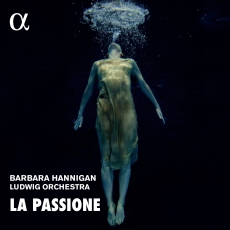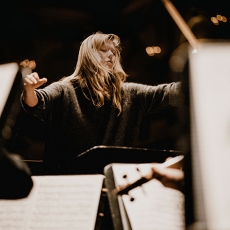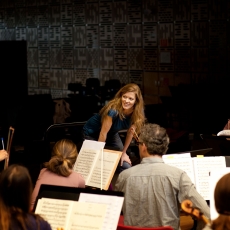Barbara Hannigan & Ludwig Orchestra - La Passione - The Guardian
Finding contemporary works to programme alongside Gérard Grisey’s Quatre Chants pour Franchir le Seuil (Four Songs for Crossing the Threshold) is an almost impossible task. This song cycle for soprano and ensemble, Grisey’s final work, first performed in 1999 just a few months after his sudden death at the age of 52, stands as one of the finest achievements of the last half-century. It’s an awfully prescient meditation on death and the process of dying, which might have signalled the beginning of a new, more openly lyrical phase in Grisey’s development, had he lived to explore it. Its mingling of loss and consolation is still very hard to separate from the memories of its premiere.
On Barbara Hannigan’s recording with the Ludwig Orchestra, she pairs Quatre Chants with a Haydn symphony, No 49 in F minor, which gives its nickname, La Passione, to the entire disc. Hannigan’s performance of the Grisey (which she conducts as well as sings) is cooler, perhaps less immediate than the other version available on disc, with Catherine Dubosc and Klangforum Wien, but it evokes the work’s haunting, unclassifiably expressive world more vividly than ever.
How the disc all fits together, though, is more problematic. Describing the programme as a triptych, Hannigan prefaces Haydn’s opening Adagio with Djamila Boupacha, the soaring central movement for unaccompanied soprano of Luigi Nono’s Canti di Vita e d’Amore, and then in the symphony encourages the continuo player to “stumble and fumble in the darkness, on a different path from the strings”. But in what is otherwise a conventional modern instrument Haydn performance, the effect of the anarchic harpsichord is distracting; in the end it’s the account of Grisey’s masterpiece that provides the enduring experience here.


